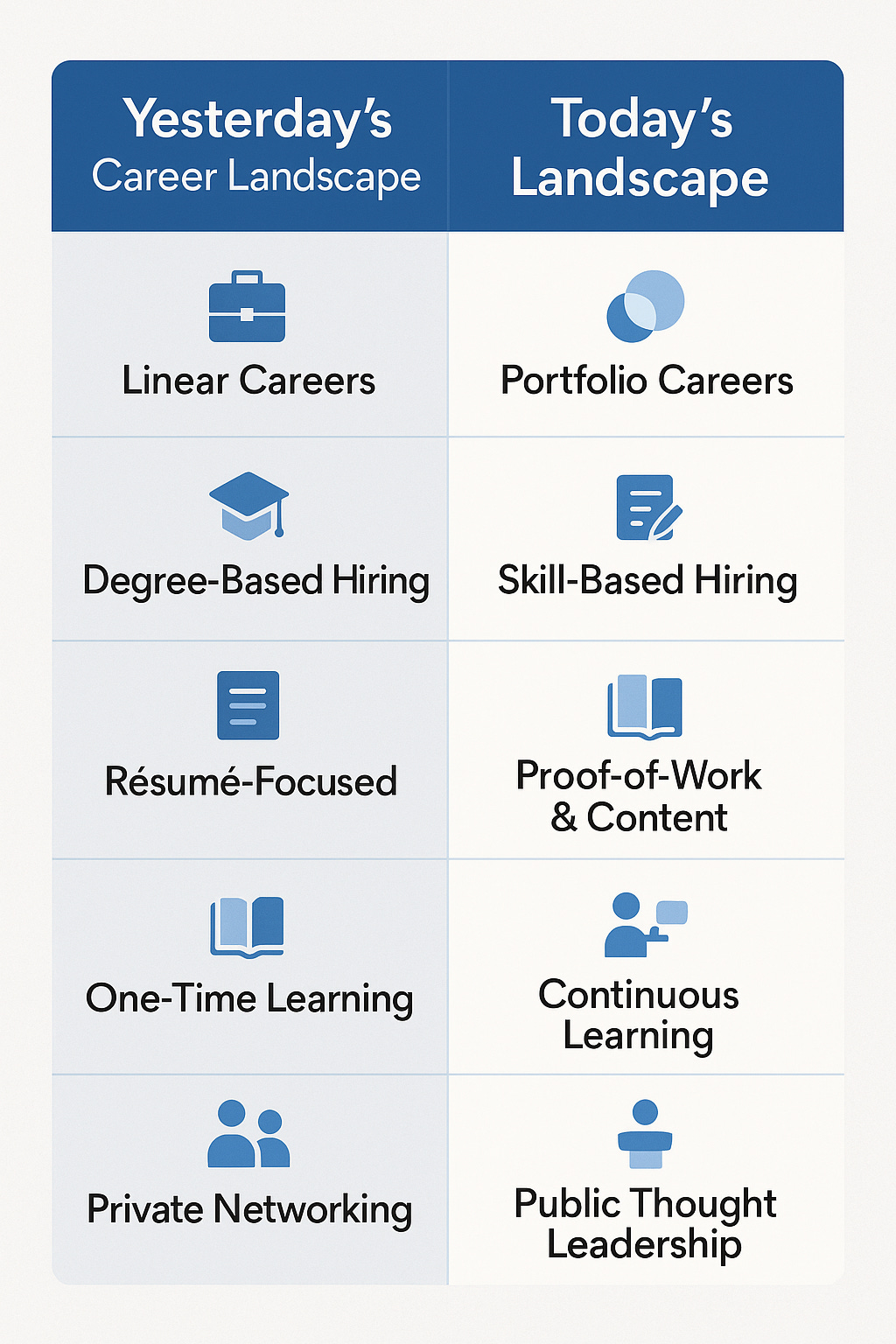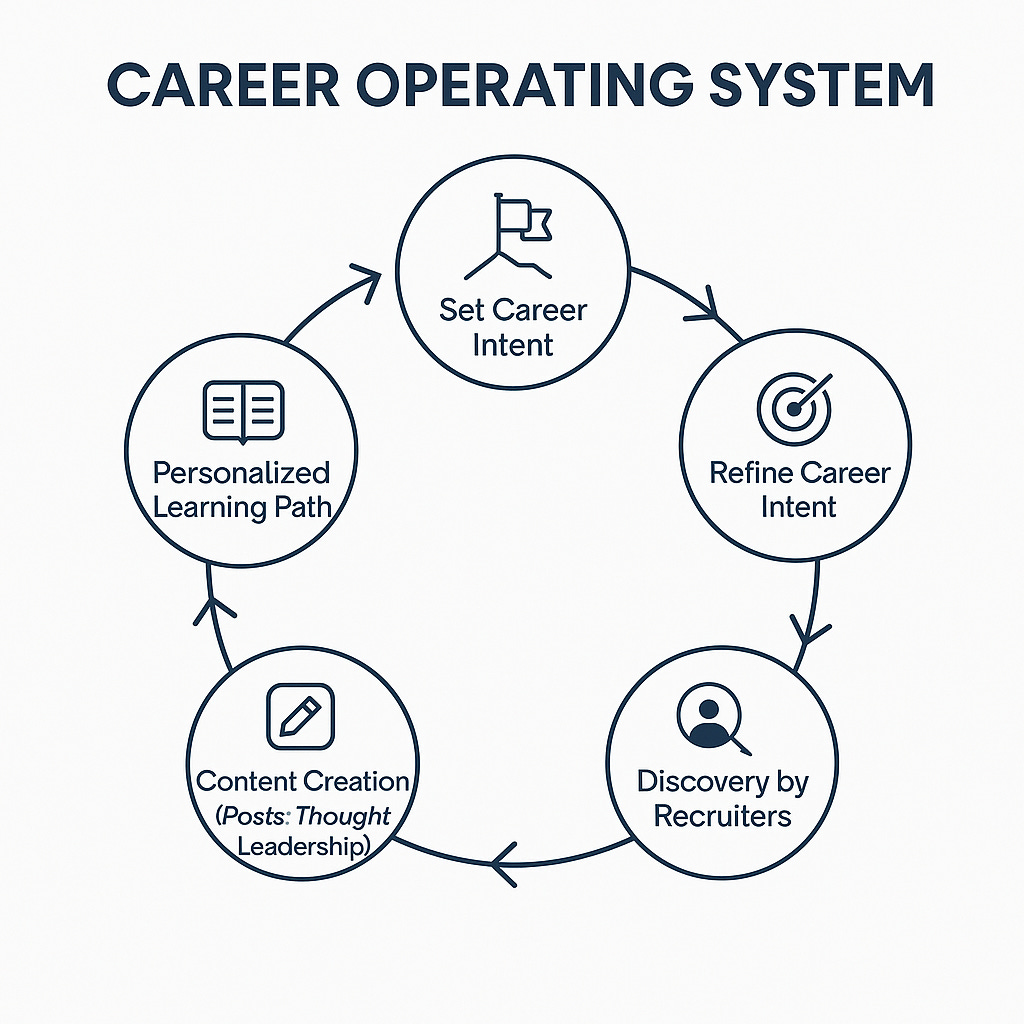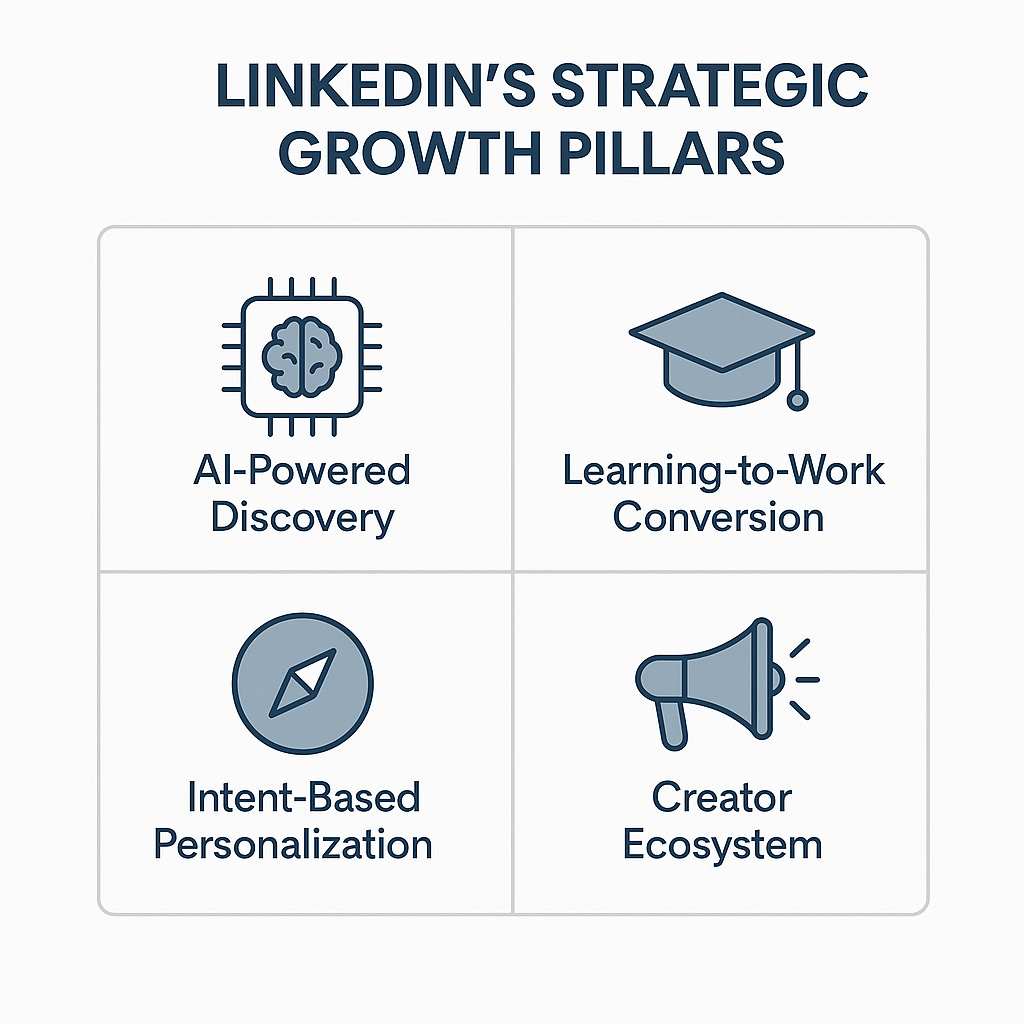If you like our work, you can support us here
In 2024 alone, more than 70% of professionals globally explored new skills outside their current job function (LinkedIn Workforce Report). More than 60% of Gen Z professionals expect to change jobs every two years. And career paths are no longer linear — people don’t just switch companies; they reinvent themselves.
Yet LinkedIn still operates like a digital resume and job board.
LinkedIn must move from being a professional network to a full-stack Career Operating System (Career OS).
The Shifts Shaping the Future of LinkedIn
To craft a forward-looking product strategy, we started by mapping the macro shifts:
1. The Fragmentation of Career Journeys
Professionals today juggle multiple roles: full-time jobs, side hustles, creator projects, and certifications.
The “portfolio career” is becoming the new normal — especially in tech, design, and business roles.
LinkedIn should shift from ‘showcasing your past’ to ‘building your next’.
2. The Learning-Work Flywheel
Courses have become the new credential.
Yet there’s a massive drop-off between finishing a course and landing a relevant job.
LinkedIn Learning must integrate with job discovery and recruiter tools.
Think: finish a course → get matched to relevant open roles → signal readiness to recruiters.
3. Rise of the Creator-Professional
Engagement on text-based thought leadership posts is growing 3x faster than job posts (internal LinkedIn trends).
Professionals are now judged by what they think and what they share, not just what they’ve done.
LinkedIn should become the best platform for professional creators, with features like monetisation, niche community tools, and better analytics.
4. AI Is Reshaping Hiring
Companies are leaning into skill-based hiring vs. degree-based hiring.
Recruiters are starting to prefer talent signals like GitHub repos, blog posts, side projects, and certifications.
Profiles must be dynamic, skills must be verifiable, and discovery must be algorithmically personalized — not keyword-driven.
What LinkedIn Can Build Next
Learning-First Engagement
With the rise of GenAI, digital freelancing, and the shift to skill-based hiring, professionals are more eager than ever to learn. LinkedIn Learning should no longer be a tab — it should be the home screen. The platform must personalize learning journeys based on career goals, job searches, and industry trends.Smarter Discovery = Stronger Connections
Content discovery is still under-optimized. If we want to become a career OS, we need an interest graph that’s 10x more powerful than the social graph. AI should connect people not just based on titles, but based on challenges they’re solving, ideas they’re sharing, and skills they’re building.Jobs = Dynamic Matchmaking, Not Static Listings
The job feed should feel more like Spotify than a spreadsheet. Candidates should get job matches based on micro-skills, personality traits, and career intent — while recruiters should see live talent pools sorted by availability, skill depth, and learning velocity.Creator-Led Influence
Thought leadership is the new résumé. LinkedIn should empower professionals to build their influence like creators do on YouTube or Substack — with analytics, monetisation tools, and better post distribution infrastructure.
These Strategies for Everyone and AI/Tech for Everyone will help you crack any PM interview by telling you the key Strategic trends and insights.
About Me
Hey, I’m Shailesh Sharma! I help PMs and business leaders excel in Product, Strategy, and AI using First Principles Thinking.
For more, check out my Live cohort course, PM Interview Mastery Course, Cracking Strategy, and other Resources




